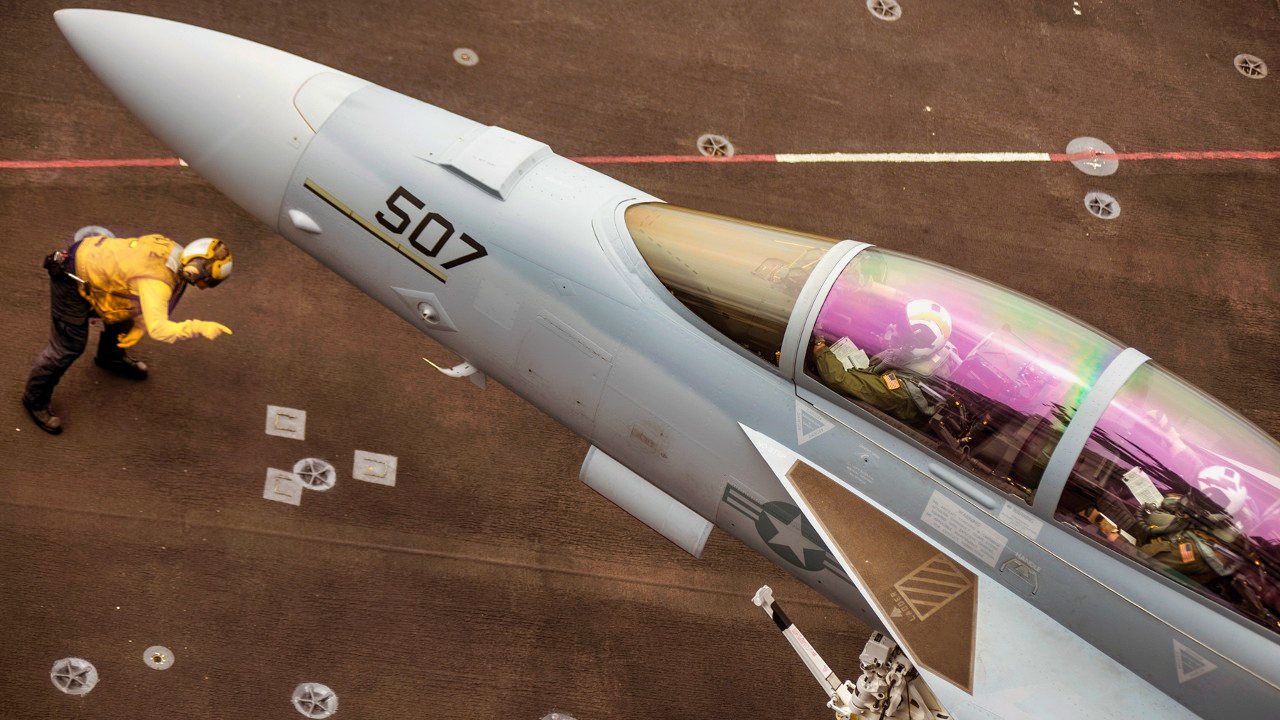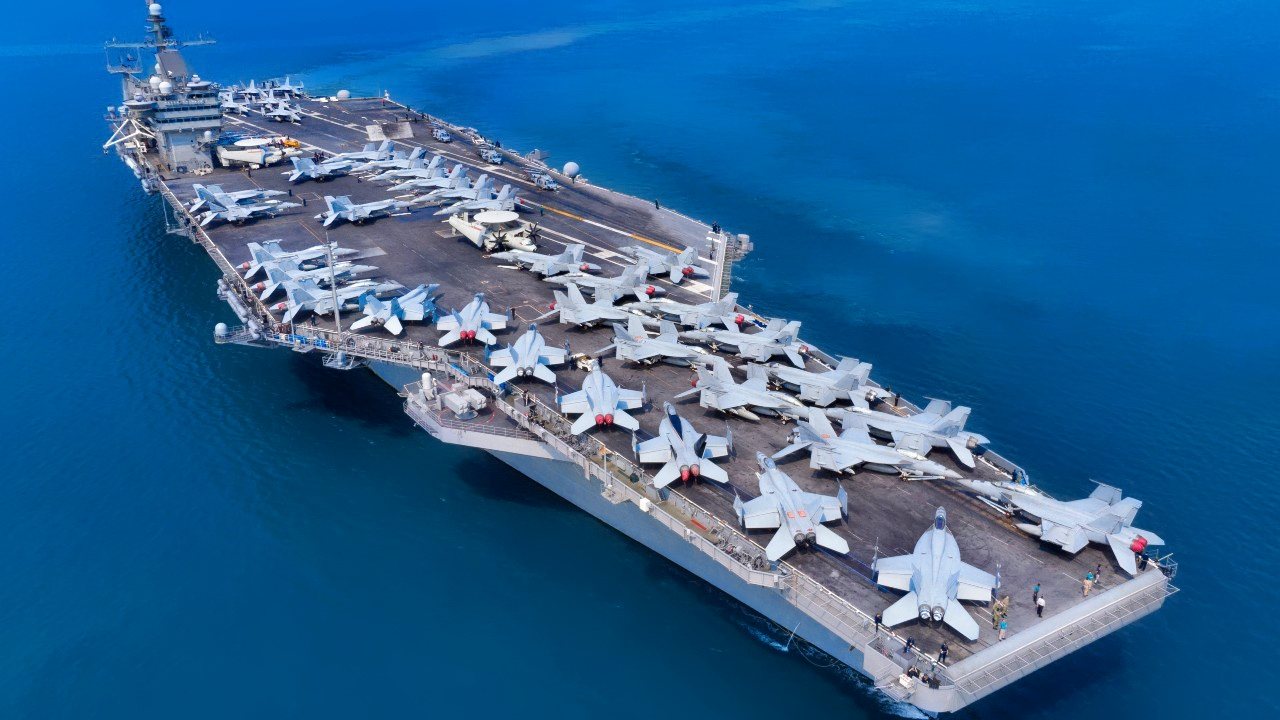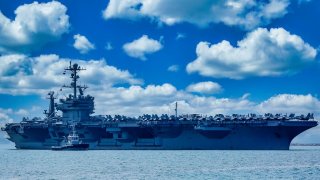Iran Has A Shot At Sinking a U.S. Navy Aircraft Carrier
Even if Iran can’t fully sink one of the U.S. Navy’s aircraft carriers, it could inflict serious damage if the right weapon is launched at the right time. For this reason, the White House must respond forcefully to Tehran’s increasing bombardments in the Red Sea.
Could Iran Sink a U.S. Navy Aircraft Carrier? Yes, There Is a Chance: On Tuesday, a cruise missile launched by the Iranian-backed Houthi rebels came within one mile of an American warship. Typically, the Navy’s destroyers shoot down missile barrages launched by the rogue group at a range of eight miles or more.
For the first time since the uptick in attacks in the Red Sea commenced this Fall, however, a cruise missile came close enough for the USS Gravely to use its Close-In Weapon System (CIWS).
The Islamic Republic of Iran is increasingly threatening American interests in the Persian Gulf and throughout the Middle East. Its regional proxy groups have ramped up rocket, drone and missile barrages targeting U.S. assets following the Israel-Hamas war.
Do Iran or their affiliate groups have the capability to sink a U.S. aircraft carrier?
How Iran Could Sink a U.S. Navy Aircraft Carrier
In the final days of 2023, Iranian-state media outlets reported that its naval forces had developed a new cruise missile capable of reaching targets more than 600 miles away.
According to Tehran, the Talaeiyeh is a long-range “smart” missile that can switch targets and adjust course during flight.
The Nasir has short-range capabilities and can be launched from warships. News of these new missiles coincided with the attack on the Norwegian-owned tanker Strinda in mid-December.
The U.S. Central Command released that an Anti-Ship Cruise Missile launched from a Houthi-controlled region in Yemen struck the vessel. Since Hamas’ October 7 massacre, the Iranian-backed group has fired dozens of barrages of missile and drone attacks targeting vessels in the Red Sea.
The USS Carney, which was deployed to the Middle Eastern waters shortly after the outbreak of war in Gaza, has shot down many of these projectiles.

While small drones and rockets do present threats to a warship, long-range cruise missiles could cause severe damage to a larger aircraft carrier. So, at least in theory, Iran could hit and sink a U.S. Navy aircraft carrier in a war.
Some analysts have grown concerned that Iran’s Noor anti-ship missile could specifically endanger a U.S. carrier. The Noor is a reverse-engineered variant of the Chinese-made C-802 anti-ship missile. Allegedly, the Iranian weapon can deploy mm-wave active radar in the final stage of its flight to locate a target and direct the missile to it. Additionally, the anti-ship missile is believed to be very difficult to jam. With a range of up to 136 miles, the Noor has a top speed of Mach-1.4 (times the speed of sound) during its terminal stage.

Tehran has also claimed that it has developed reconnaissance drones, helicopters and marine cruise missiles. According to Iranian Admiral Shahram Irani, "All of this equipment has been designed and produced by Iran's military industry." Despite these claims, analysts must take into consideration Tehran’s long history of over-exaggerating its military capabilities. The true specs and abilities of Iran’s naval weapons has not been determined.
Even if Iran can’t fully sink one of the U.S. Navy’s aircraft carriers, it could inflict serious damage if the right weapon is launched at the right time. For this reason, the White House must respond forcefully to Tehran’s increasing bombardments in the Red Sea.
About the Author
Maya Carlin, National Security Writer with The National Interest, is an analyst with the Center for Security Policy and a former Anna Sobol Levy Fellow at IDC Herzliya in Israel. She has by-lines in many publications, including The National Interest, Jerusalem Post, and Times of Israel. You can follow her on Twitter: @MayaCarlin.


